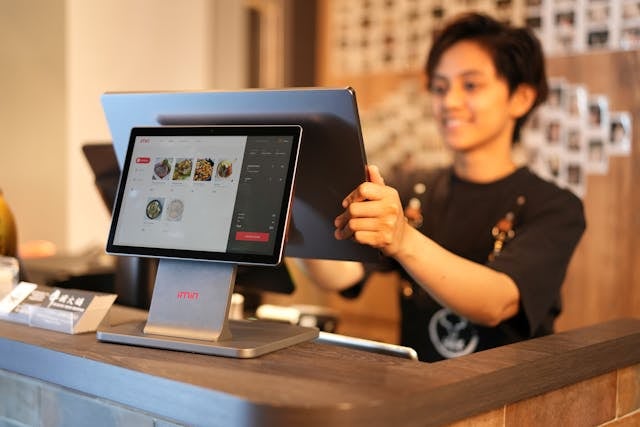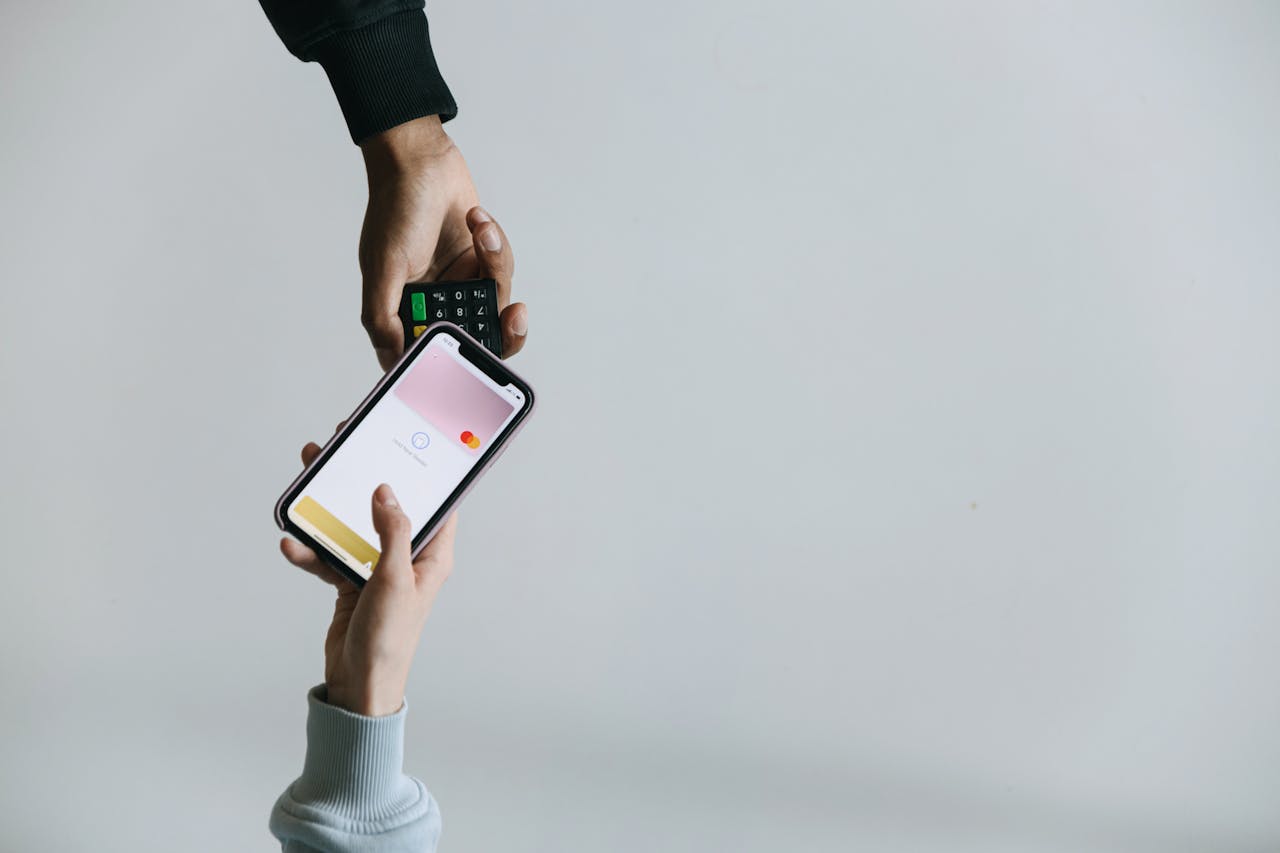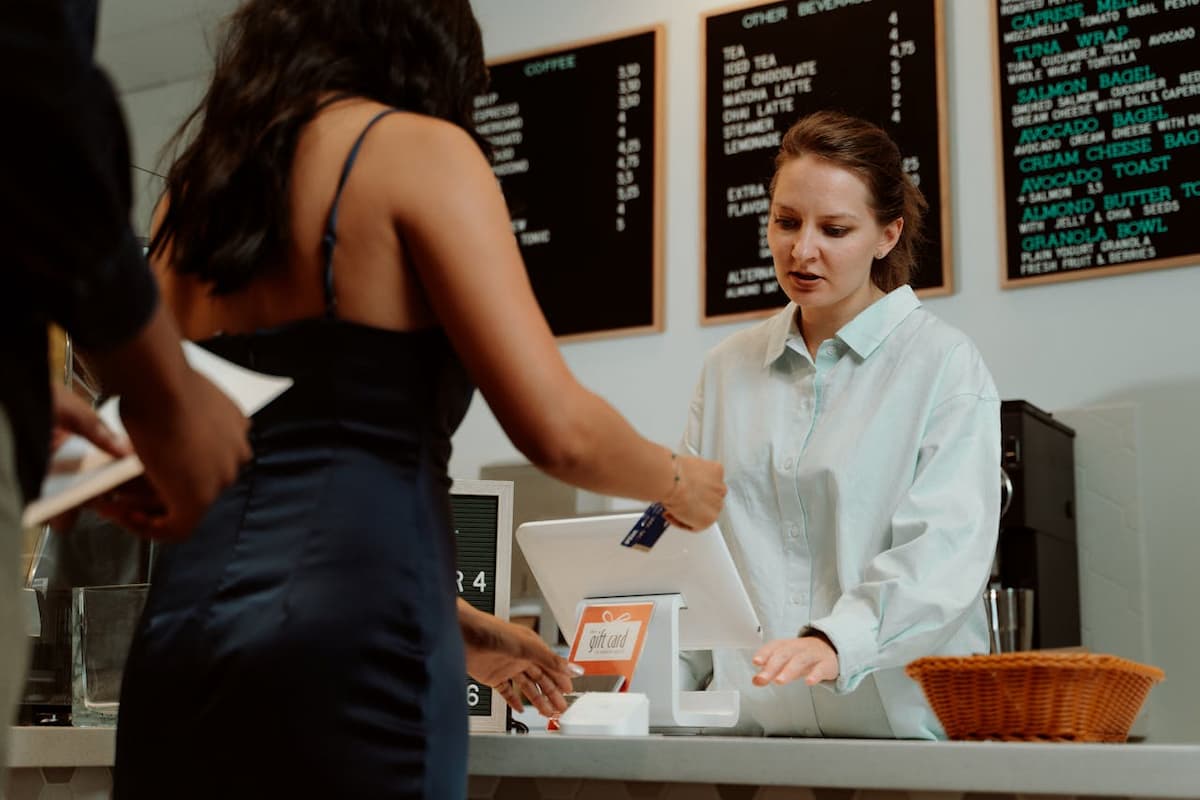Traditional payment methods have evolved along with the development of the e-commerce market and various ways of making purchases through, for example, mobile devices. We are now living in a time where convenience, speed and the desire to have as little involvement as possible are priorities. That is why we are increasingly experiencing self-service checkouts in markets, and cash transactions are being replaced by payment card transactions or NFC enabled devices.
What are NFC Mobile Payments and How Do They Work? How to use Near Field Communication (NFC)? Why do businesses use NFC mobile payments? I will try to answer these and many other questions by bringing you a little closer to the world of modern transactions.
Table of Contents:
2. How NFC contactless payments work in real life?
3. Benefits of NFC payments for businesses and consumers
4. How FoodTech brands are embracing NFC mobile payments?
5. Integration of NFC technology with Digital Wallet
6. Challenges and issues to consider
7. Are NFC payments right for your business?
Definition of NFC payments
To dive deeper into the topic of NFC, it's worth first understanding what exactly this statement refers to. According to the definition posted on Investopedia: Near Field Communication is a short-range wireless technology that makes your smartphones, tablets, wearables, payment cards, and other devices even smarter. Near-Field Communication is the ultimate technology solution for connectivity.
In practice, NFC mobile wallet payments works by transmitting data via electromagnetic radio waves, allowing two mobile devices to communicate only when they are very close to each other - usually no more than a few centimeters apart. Importantly, both devices must be equipped with a special NFC chip, and establishing the connection itself requires a conscious action by the user, which significantly reduces the risk of accidental data transmission, for example, when walking past a smart poster or terminal. However, due to its dependence on power, NFC technology does not completely replace other payment methods - a discharged battery can prevent its use.
And if you'd like to explore the technical aspects of NFC technology even further, visit the IT Glossary from Railwaymen, where we've described the key concepts behind the technology and other FinTech solutions in an accessible way.
How NFC contactless payments work in real life?
It's time to discover the “secrets of the magic” behind NFC payments. Although, on the surface, it appears to be a single click that results in payment, it is actually the result of several steps. The first prerequisite is to have a device which support NFC payment options. The operating system does not matter, as both iOS and Android have dedicated apps (Google Pay or Apple Pay). Next, open the corresponding digital wallet app. These wallets store the user's encrypted payment information, which is secured by biometrics or access codes.
When activation of the e-wallet has occurred, the user should hold the device near the NFC enabled payment terminal at a distance of no more than 4 centimeters. At this point, communication between the devices via electromagnetic radio fields is activated. The point-of-sale (POS) terminal reads data from the device, but does not receive the actual contactless payment card number. Instead, a unique, one-time token is transmitted - a critical security measure known as tokenization. This token is valid only for this particular transaction and, even if intercepted, will be useless for any future purchase.

Next, the POS terminal sends the token to the payment processor or acquiring bank, which communicates with the card network (e.g., Visa or Mastercard) and the customer’s issuing bank. The bank checks the token, authenticates the customer’s account, and approves (or declines) the transaction in real time.
The final step is confirmation: the customer sees a checkmark or vibration on their device, and the cashier or self-checkout terminal prints or displays a receipt. All of this usually happens in just a couple of seconds, making NFC payments one of the fastest and smoothest payment experiences available today.
Benefits of NFC payments for businesses and consumers
There are many arguments that encourage people to use NFC payments apps. The most important is the low entry threshold for using them. It is such a convenient and fast form of payment that more and more people of all ages are being convinced to use it. Public transport or long lines at the store are just a slice of situations that require us to make quick settlements. NFC payments technology not only takes care of speed, but places great emphasis on enhanced security features.
Integrating modern payment technology, such as NFC mobile payment technology, significantly enhances transaction security and efficiency for businesses.
Near Field Communication uses tokenization, biometric authentication with the help of fingerprint scanning or facial recognition, and many other technologies to ensure that users’ personal information is fully protected and money is not lost through third parties. These are advanced methods that are constantly being developed to prevent any fraudulent activity.
What appeals to the business side, in turn, is the diversification of payments. By giving different types of payment options, companies affect customer satisfaction and give themselves opportunities to increase operational efficiency. Contactless payments enable faster transactions, which affects the fluidity of service and a higher percentage of completed payments.
Moreover, adopting modern payment methods helps shape the company’s image as innovative and forward-thinking — a factor that increasingly influences consumer trust and loyalty. The ability to keep up with digital trends is not just a branding advantage; it’s becoming a competitive necessity. A clear example of this can be seen in the FoodTech sector, where digital transformation plays a critical role in meeting evolving customer expectations.
How FoodTech brands are embracing NFC mobile payments?
Companies such as Alamar (master franchisee of Domino’s and Dunkin' Donnuts in the MENA region) and Shawarmer have recognized the strategic importance of embracing contactless payments and digital wallets within their customer journeys. Both organizations have partnered with Railwaymen to build and enhance digital platforms that support seamless, secure, and modern contactless transaction flows — tailored specifically for fast-paced food service environments. These collaborations demonstrate how thoughtful payment infrastructure, when combined with a robust mobile or web application, can unlock meaningful improvements in user experience and business performance.
Another hidden benefit for companies is the ability to better collect and analyze data. When combined with digital wallet applications or custom payment platforms, NFC mobile payments can generate valuable information on consumer behavior, purchase frequency and preferences - all of which can inform marketing strategies and customer engagement efforts.

Integration of NFC technology with Digital Wallet
As I mentioned earlier, NFC payments are linked to digital wallets that enable “touch to pay” functionality. This is not the only functionality that takes place as part of this integration. In addition to NFC transactions, e-wallets can also generate digital receipts, enable the collection of loyalty points, provide users with discount coupons, or collect a history of past purchases. This is a great convenience for users, as they have all the useful tools in one place, and from the perspective of companies, it's another channel to induce customer engagement and loyalty, not only during the shopping process.
For companies that want to build a custom digital portfolio, choosing the right development partner is crucial. At Railwaymen, we have helped companies in a variety of industries design and implement secure, scalable wallet solutions - tailored to specific use cases, whether in grocery, retail or beyond. When combined with contactless payments, a mobile wallet app becomes more than just a payment tool - it becomes a strategic asset.
Explore our Digital Wallet Offer
Challenges and issues to consider
NFC mobile payments present not only a number of benefits, but also challenges that may be associated with them. Particularly in emerging markets, one blocker may be the limited availability of NFC enabled devices. Moreover, many businesses may be faced with the need to update their existing POS systems to accept NFC payments. This raises additional costs that not everyone can afford. Low knowledge of how trending payment methods work can also be a problem.
NFC technology enhances operational efficiency by speeding up transaction processing and minimizing cash handling. Another limitation is battery dependency - NFC payments depend on the device being powered, which means that a discharged phone can temporarily prevent the payment processing from being used. For this reason, many users still prefer to carry a credit or debit card or an alternative payment method, especially for high-stakes transactions.
From a development perspective, ensuring compliance with data security standards such as PCI-DSS and local financial regulations is essential. This includes implementing strong encryption, tokenization and secure biometric authentication. It's also important that the user interface is intuitive and accessible to people with varying levels of technological sophistication.

Are NFC payments right for your business?
Whether you’re running a fast-growing food service business, a retail outlet or a customer-facing digital product, NFC payments can offer clear benefits - but they're not a one-size-fits-all solution. The decision to implement NFC should come from a clear understanding of customer behavior, business goals and the realities of your industry.
NFC payment technology is generally seen as more secure compared to traditional credit card systems, but it is not entirely risk-free. Competitors discuss potential security threats, including mobile phone hacking and the evolving tactics of fraudsters, while also mentioning the protective measures such as encryption and tokenization that enhance the safety of these transactions.
NFC Payments: A smart step for future-ready companies
For companies that want to remain competitive, implementing contactless technology sends a strong signal of innovation and customer focus. It can also pave the way for broader digital transformation efforts, such as loyalty integration, mobile user journeys and data-driven marketing strategies.
If you're considering implementing NFC technology or planning to build a custom digital wallet that supports contactless payments, Railwaymen can support you through the entire process - from technical consulting and UX design to full development and post-launch support. Our experience with clients like Shawarmer and Alamar shows that when technology is aligned with real business needs, it provides lasting impact.
At the end of the day, it's not just about whether NFC is right for your business - it's about whether your payment experience is keeping up with customer expectations. If not, it may be time for a change.

%20(1)%20(2)%20(1).jpg)


